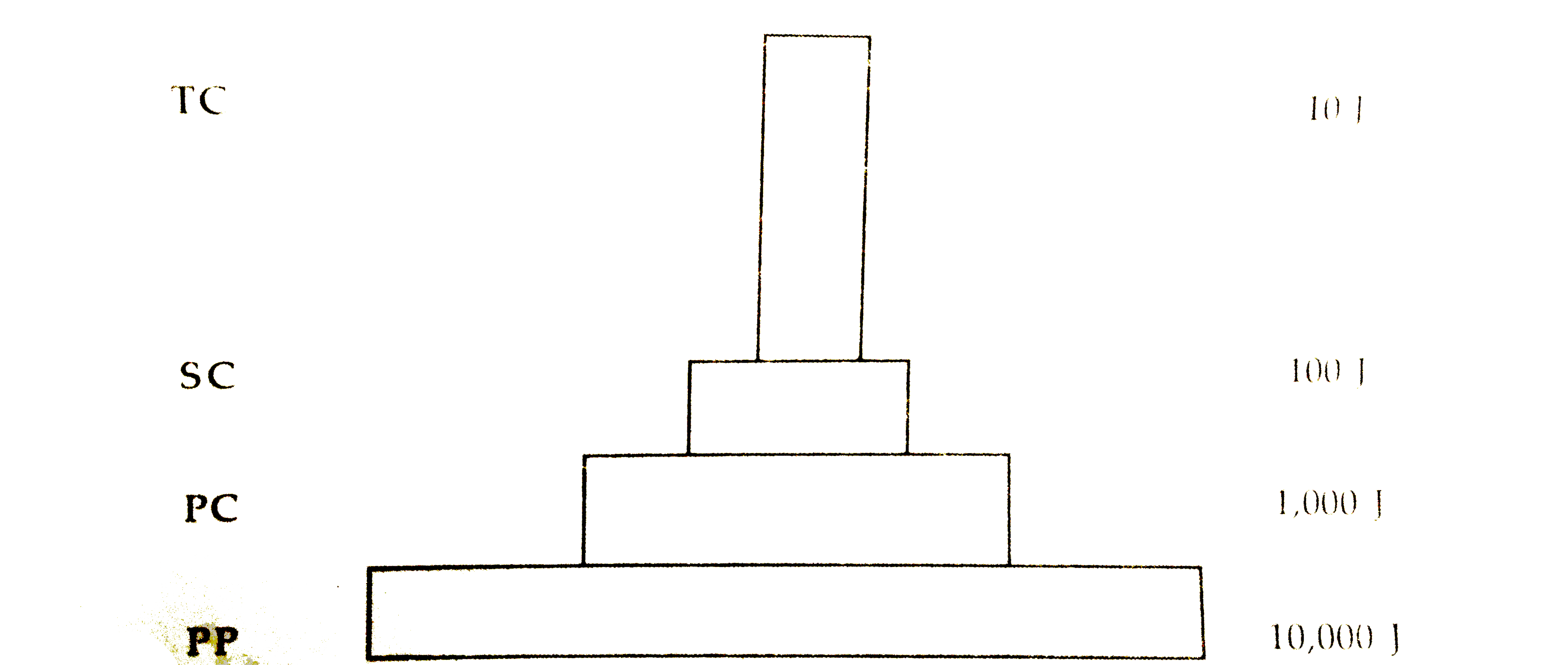Give an example of an ecological pyramid which is always upright. Justify your answer.
Step-by-Step Solution:
1. Identify the Ecological Pyramid: The ecological pyramid that is always upright is the pyramid of energy.
2. Explain the Structure of the Pyramid: In the pyramid of energy, each trophic level represents the amount of energy available at that level. The base of the pyramid consists of producers (autotrophs), followed by primary consumers (herbivores), secondary consumers (carnivores), and tertiary consumers (top predators).
3. Energy Flow Between Trophic Levels: Energy flows from one trophic level to the next, but there is always a loss of energy during this transfer. Typically, only about 10% of the energy from one level is transferred to the next level, while the rest is lost primarily as heat.
4. Illustrate with an Example: For instance, if the producers (first trophic level) have 10,000 kilocalories of energy, the primary consumers (second trophic level) would receive approximately 1,000 kilocalories (after a 90% loss). The secondary consumers (third trophic level) would then have about 100 kilocalories, and the tertiary consumers (fourth trophic level) would have around 10 kilocalories.
5. Justification for the Upright Structure: The pyramid remains upright because as you move up the trophic levels, the energy decreases. This consistent decrease in energy at each level ensures that the pyramid shape is maintained, with the base being the widest and the apex being the narrowest.
Justification Summary:
The pyramid of energy is always upright due to the continuous loss of energy at each trophic level, which results in a decreasing amount of energy as you move from producers to top consumers.
The pyramid of energy is always upright due to the continuous loss of energy at each trophic level, which results in a decreasing amount of energy as you move from producers to top consumers.
Topper's Solved these Questions
- SELF ASSESSMENT PAPER 06BOOK - ICSECHAPTER - SELF ASSESSMENT PAPER 06EXERCISE - PART - II (SECTION .B.)
20 Videos
- SELF ASSESSMENT PAPER 05BOOK - ICSECHAPTER - SELF ASSESSMENT PAPER 05EXERCISE - Part-II (Section-C)
8 Videos
- SELF ASSESSMENT PAPER 07BOOK - ICSECHAPTER - SELF ASSESSMENT PAPER 07EXERCISE - PART - II (SECTION .C.)
18 Videos
Similar Questions
Pyramid of biomass is always upright.
View SolutionGive an alternative term for ecological pyramids.
View SolutionBest type of pyramid which is always true is .
View SolutionCan Q and S, both be metals ? Justify your answer.
View SolutionIn food chain or food web which one is more stable. Justify your answer.
View SolutionWhy the pyramid of energy is always upright? Explain.

View SolutionMilk is poured into a cup of tea and is mixed with a spoon. Is this an example of a reversible process ? Give reason in support of your answer.
View SolutionWhich is not a limitation of the ecological pyramid ?
View SolutionIt is true to say that the mean, mode and median of grouped data always be different? Justify your answer.
View SolutionWhich one is incorrect about ecological pyramids?
View Solution
